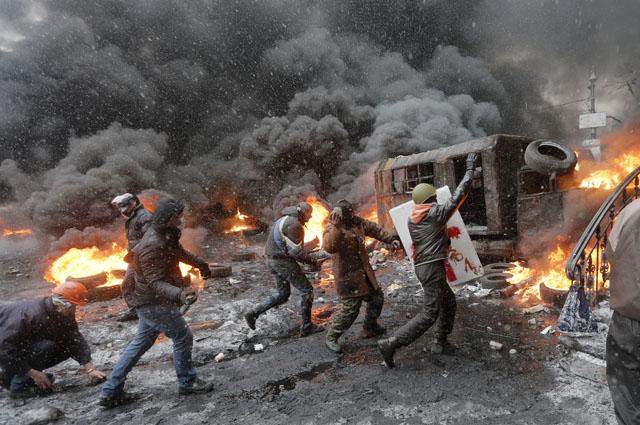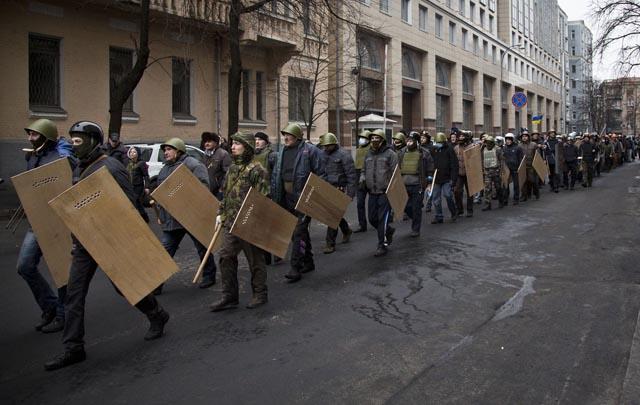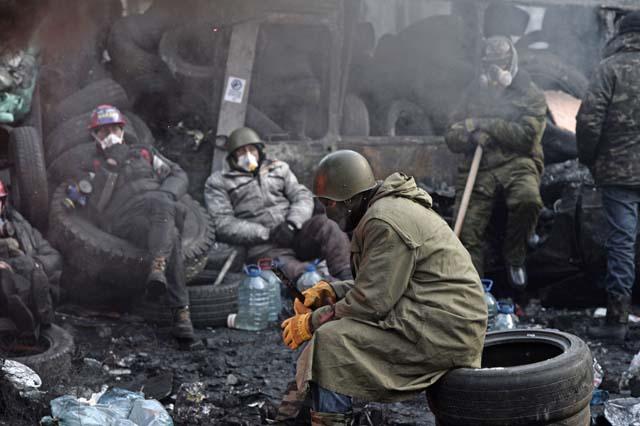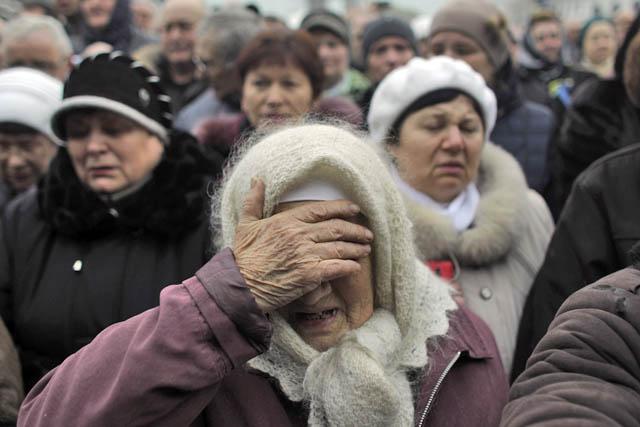KIEV — The mayor of a western city warned that his police would fight any troops sent in by the president. The governor of an eastern region posted an image of an opposition lawmaker beaten bloody, saying he couldn’t contain his laughter.
Two months into Ukraine’s anti-government protests, the two sides are only moving further apart.
To be sure, Ukraine has never been monolithic. Russia and Europe have vied for dominance for centuries, fostering deep cultural differences between the mostly Ukrainian-speaking western and central regions that yearn for ties with the West, and the Russian-speaking east and south that looks to Russia for support.
As the crisis has deepened, each side has grown stronger in its convictions — and those who stood in the middle have been forced to choose sides.
The demonstrations began with an old question: Should Ukraine follow a European path or move closer into Russia’s sphere? In November, President Viktor Yanukovych — after years of touting a political and economic treaty with the European Union — had abruptly walked out on it in favor of a bailout loan from Russia. But the crisis changed significantly a week later when riot police violently broke up a small, peaceful rally in the middle of the night on Kiev’s central square.
Suddenly, the calls for EU integration were replaced with demands for Yanukovych’s ouster and a new government that would guarantee human rights and democratic freedoms. Slogans such as “Ukraine is Europe” were replaced by “Down with the gang!”
The divide deepened further as peaceful protests turned ever more violent. Last month, after four protesters were killed, and police were widely reported to have beaten and abused activists, the opposition’s anger became more intense. And Yanukovych’s supporters were appalled by images of riot policemen set aflame by protesters’ Molotov cocktails, the toppling of a statue of former Soviet leader Vladimir Lenin and the occupation of government buildings.
The differing visions are rooted in cultural realities. To the west, protest-friendly Lviv feels like a typical European city, with cobblestone streets, Catholic churches and outdoor cafes. To the east, the Yanukovych stronghold of Kharkiv is an industrial city with massive Soviet architecture and a giant Lenin statue.
Linguistics also come into play in a country where roughly 40 per cent of people speak Ukrainian at home, a third speak Russian and a quarter speak both. The two languages are closely related, and it is not uncommon for one Ukrainian to address another in one language and hear a response in another. Most speakers on Kiev’s Independent Square address the crowds in Ukrainian, but both languages are heard at the barricades.
But what for years have been friendly rivalries became tense feuds as the violence increased. The mayors of western and eastern cities traded barbs, while on the streets of Kiev — roughly in the centre of the country — angry protesters tossed firebombs and rocks at police, who responded with tear gas and rubber bullets.
Police were caught on video humiliating and abusing a protester, who had been stripped naked and made to stand in the snow. Pro-government activists largely from eastern Ukraine — allegedly hired by the government — descended on Kiev to harass protesters.
Protesters formed “self-defence units” that detained the pro-government activists and forced some to march through the streets with their hands bound. Social networks filled with pages giving the addresses of riot policemen with calls for retaliation.
Protesters accused Yanukovych of staining his hands with blood, while Yanukovych supporters charged that the protesters were nationalists bent on tearing the country apart.
The country now stands split nearly down the middle. According to a December poll by the Razumkov Centre think tank, 50 per cent of Ukrainians supported the protests while 43 per cent opposed them. The poll, which interviewed 2,010 people across Ukraine in person, had a margin of error of 2.3 per centage points.
And as the country has polarised, Razumkov found, both Yanukovych and the main opposition leaders have risen in popularity, while the number of people who support neither side has fallen. Support for Yanukovych rose from 19 per cent in October to 29 per cent in December, while opposition leader Vitali Klitschko rose from 16 per cent to 22 per cent and Arseniy Yatsenyuk from 6 per cent to 12 per cent.
The sides now appear to be at a stalemate.
Yanukovych, whose fraud-ridden presidential victory was reversed by the 2004 Orange Revolution, has no desire to yield to protests once again. Instead, he has promoted hardliners within his government, offered only limited concessions and essentially decided to wait out the demonstrators.
Those demonstrators are a determined bunch, as can be seen in the giant tent camp that has withstood the bitter cold and several assaults by government forces. But they appear unable to significantly broaden their movement into parts of the country where the opposition is weak, as some of the protesters use nationalist rhetoric that alienates even liberal eastern Ukrainians. They have also been unable to break Yanukovych’s control of parliament, where most lawmakers obey his orders.
As more than 100 protesters languish in jail and lawmakers’ debates on solving the crisis make little progress, Klitschko warned the president Tuesday that without a resolution to the crisis the country risks falling off a cliff.
“The temperature of society is growing,” he said. “I told the president that we have to immediately take a decision, because the future of Ukraine depends on this decision.”















